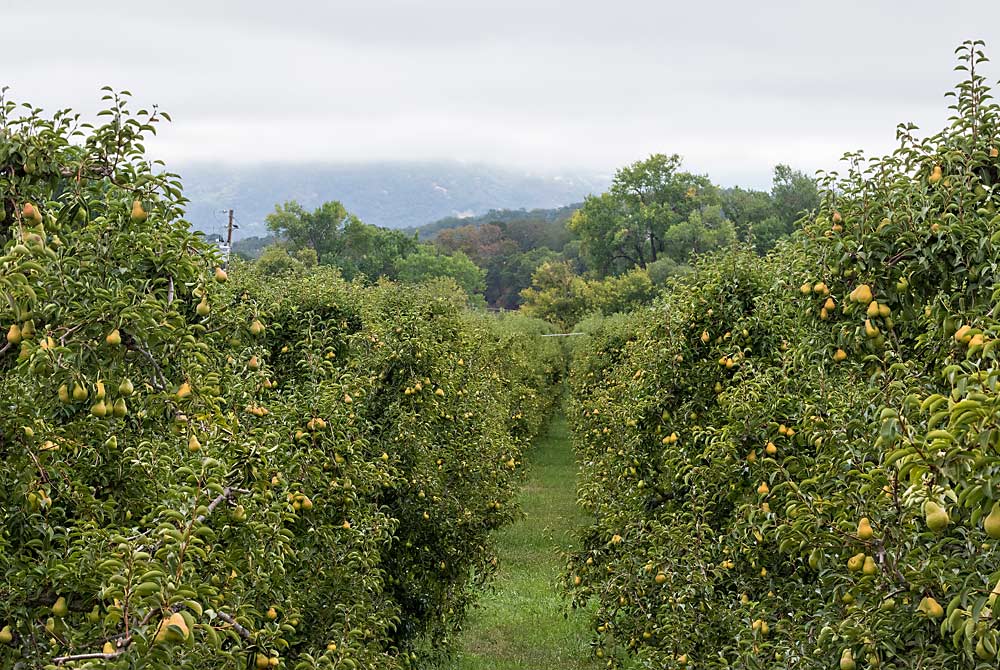
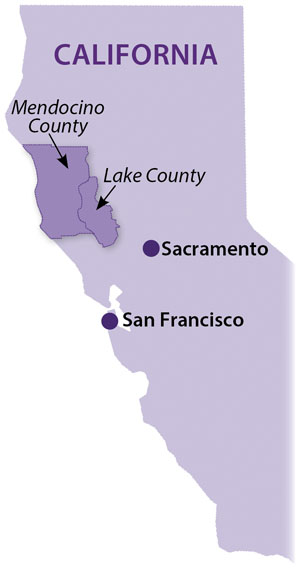
When Kurt Ashurst planted new pear trees, his Mendocino County, California, neighbors looked at him quizzically. The market for canned Bartletts was in decline, costs were rising and government regulations were getting stricter. “People said I was crazy, and maybe I am,” he recalled.
That was 15 years ago.
Today, amid many of the same challenges, his pear farm is up for sale. Labor shortages, increasing costs, drought and extreme heat have pushed him to look for other areas to continue farming, but probably not producing pears.
Geographic and economic conditions are driving the pear region near Ukiah into decline. Processors are far away. Workers prefer cannabis farms. The once verdant area is suffering cyclical droughts. And to rub salt in the wound, feral pigs sometimes descend from the hills to furrow orchard floors at night.
Ashurst doesn’t see much future for the pear industry in Mendocino and Lake counties.
“I don’t think it’s going to be here much longer,” said Ashurst, a fourth-generation farmer and second-generation pear grower.
His situation is an extreme case, Ashurst said, and he plans to continue farming until — and unless — he finds the right buyer.
While he’s looking for a way out, other growers are determined to find a way to stay in business in the face of what all agree are mounting challenges.
California pear growers have a track record of innovation, said Rachel Elkins, a semiretired pomology farm advisor for University of California Cooperative Extension in Lake County. They have developed areawide, voluntary integrated pest management programs, hosted high-density rootstock trials on trellis systems that could make orchards platform-friendly and tinkered for decades with new varieties, she said. Meanwhile, the extension office is in the process of hiring a regional diversified agricultural area advisor. That person won’t be a direct replacement for Elkins, though pomology will be among the duties.
But modernization on a commercial scale takes capital that growers are hesitant to borrow if they think the pear industry is fading, she said.
“Every time you think we’ve stabilized, something else happens,” Elkins said.
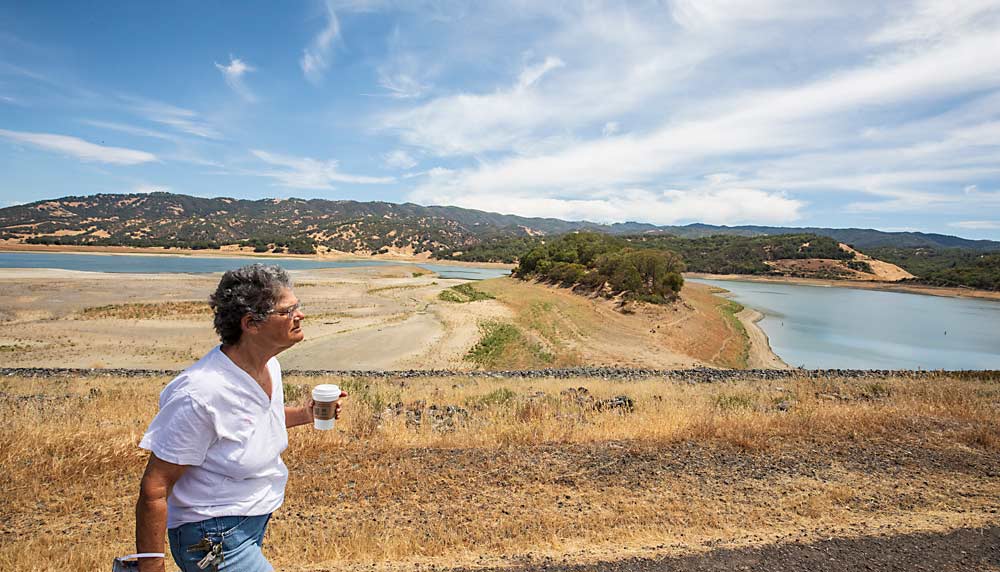
Heat and drought
In 2021, that something else was drought and heat. In Mendocino and Lake counties, floods happen more often than drought, while fog historically keeps things cooler.
Last year, not so much. Temperatures topped 95 degrees Fahrenheit for weeks at a time, while several days reached 110. To protect harvested fruit as it waited for trucks, Ashurst erected a shade system with old bins and tarps. Growers struggled to size fruit. One Ukiah grower left a third of his fruit on the trees, just because it was too small.
The day Good Fruit Grower visited — August 2 — sun damage was widely visible, while water authorities cut off the usual practice of drawing water directly from the Russian River. Growers had to purchase a limited amount of stored water from Lake Mendocino, which fell below 20,000 feet for the first time since 1977. The coming season may be better: The area received a record amount of rain in December but not enough to refill the lake.
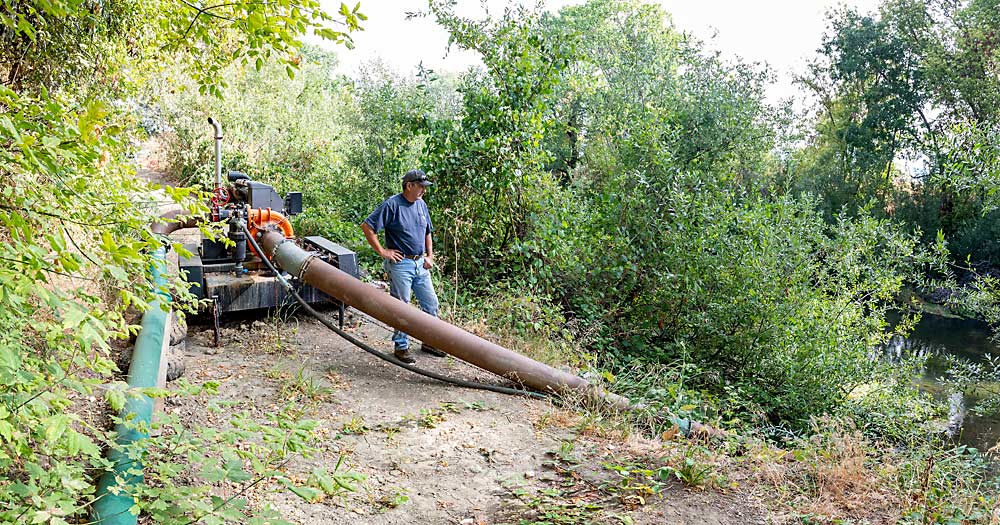
Known in pear circles as the North Coast or Mountain District, the area has a history of shifting crop portfolios. Early Russian settlers planted apples and pears in the 1800s, but hops were the first cash crop. Then came plums and other tree fruit. Most pear growers have been replacing orchards with wine grapes.
Elkins recalled working with 150 pear growers in the North Coast area early in her career. Today, there are about 60 pear farmers in the entire state, according to the California Pear Advisory Board, which collectively markets fresh and processed Bartlett pears.
Mendocino County no longer has any fresh packers, and Lake County has only a few. Otherwise, there is Rivermaid Trading Co. in Lodi, three hours or more over hilly roads or congested Bay Area freeways. The state has only two canners left: Del Monte Foods in Modesto and Pacific Coast Producers in Oroville.
Most pear farmers in the North Coast grow for both markets, but the region heavily relies on processing, primarily for fruit cocktail cups. Ashurst is 100 percent processing because he prefers the predictability of prices, negotiated collectively by the advisory board.
Though canning saw a pandemic-fueled surge in demand the past two years, consumers have been steadily shifting toward fresh fruit, while retailers stock cheap imports. Even the Pacific Northwest is down to only two processors. To the south, growers in the Sacramento-San Joaquin Delta, even more dependent on canneries, also have lost acreage and have shifted more fruit to the fresh market, putting a harvest timing squeeze on the North Coast: Too early, and they overlap with the Delta and South American imports; too late, and they bump into the Pacific Northwest window.
High density
“The pear guys left are just kind of an endangered species,” said Chris Ruddick, a Ukiah grower and pear advisory board member.
The bulk of Ruddick’s 160 acres is processing Bartletts, grown on traditional trees, but he has one 4.5-acre, high-density trellised block. With Elkins’ help, he and his father started the plot, nicknamed The Kindergarten, in 2005 as a trial of several varieties and rootstocks. Instead of wires, they trained the 5-foot by 10-foot spaced tall spindle planting onto four horizontal nylon strings, which have largely frayed away. The trees have held their shape.
Ruddick has since whittled the plot down to just Bartletts but still farms it commercially. The small trees routinely produced 20 to 25 tons per acre, roughly equivalent to his traditional blocks, but they paid for themselves within six years, a faster turnaround than the big trees.
If he was planting a new block today, he would use trellises again, he said. But he can’t justify the cost during the industry uncertainty. Meanwhile, workers didn’t take to the trellis as well as he expected. They also pushed back against an early iteration of a platform.
“It’s been kind of a surprise,” he said.
Labor is one of the region’s biggest struggles. For harvest, growers typically contract for workers from Bakersfield or Fresno, as well as Oregon and Washington. Much of the local workforce was lured away by the booming marijuana industry, which pays more for less-demanding jobs. That’s leveling off now, growers said. Many of Ashurst’s employees who left for cannabis farms have returned, seeking more hours. He had to turn some pruners away in November. Only a few growers in the area hire H-2A workers.
Technology offers hope, but it often reaches that area of California later than Stockton or Sacramento, which are closer to the Bay Area startups, said Cody Ashurst, Kurt’s son. The experimental block of trellises on their farm takes a lot of labor and would be expensive to install, while robotic pickers for pears are far from commercialization. Growers also have to learn new, more precise water management — something technology can help with.
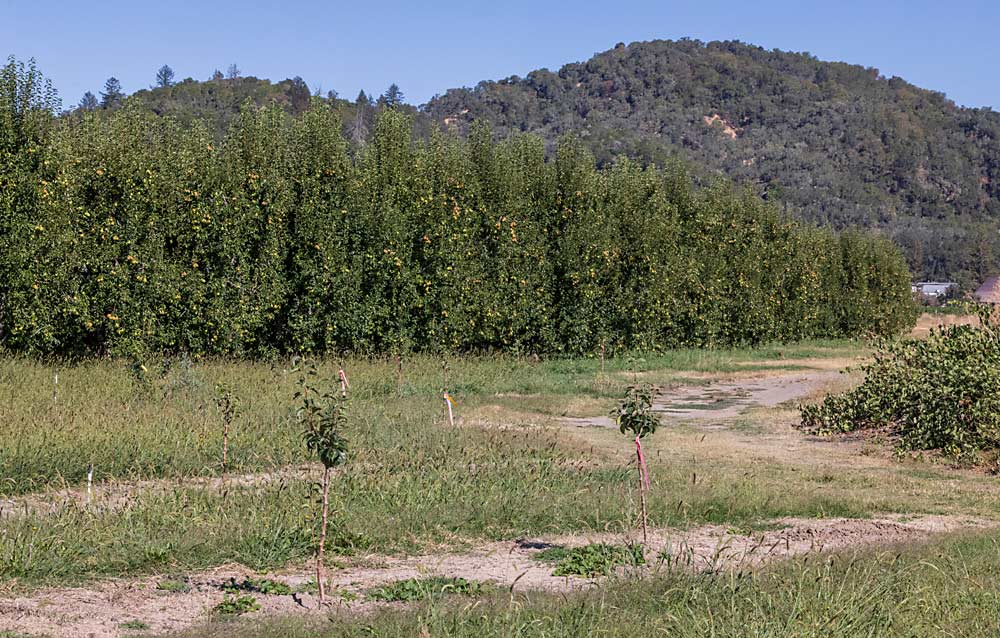
“We can’t do it just turning on the pumps for 48 hours,” he said.
Cody lives on one of his father’s farm plots and helps in the business, but he has taken an off-farm job as a customer success manager at Phytech, an Israeli company that monitors plant water needs and delivers irrigation recommendations via a phone app.
Randy Ruddick, Chris’ cousin and neighbor, still has hope for the region’s pear producers.
The fourth-generation grower recently removed 12 acres of Bosc pears to adjust to a congested market and has decided not to replant them right now. He will leave that decision to his two daughters, who have both returned to the Ukiah area and want to become Generation 5. They may plant wine grapes, but they also might try a trellis, he said.
His extended family has a history of innovation. The family planted some of the first commercial pears in the area in the 1800s. Some of those trees are still producing after 140 years. His father planted the first red pears, 15 acres of Max Red Bartletts, in the early 1960s. People looked at him funny, but the fruit sold.
“We cannot farm on history and emotion,” he said. “We have to go forward.”
—by Ross Courtney

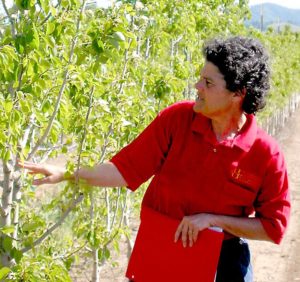
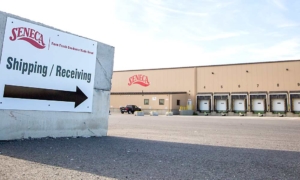
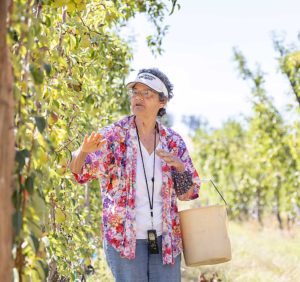





Leave A Comment